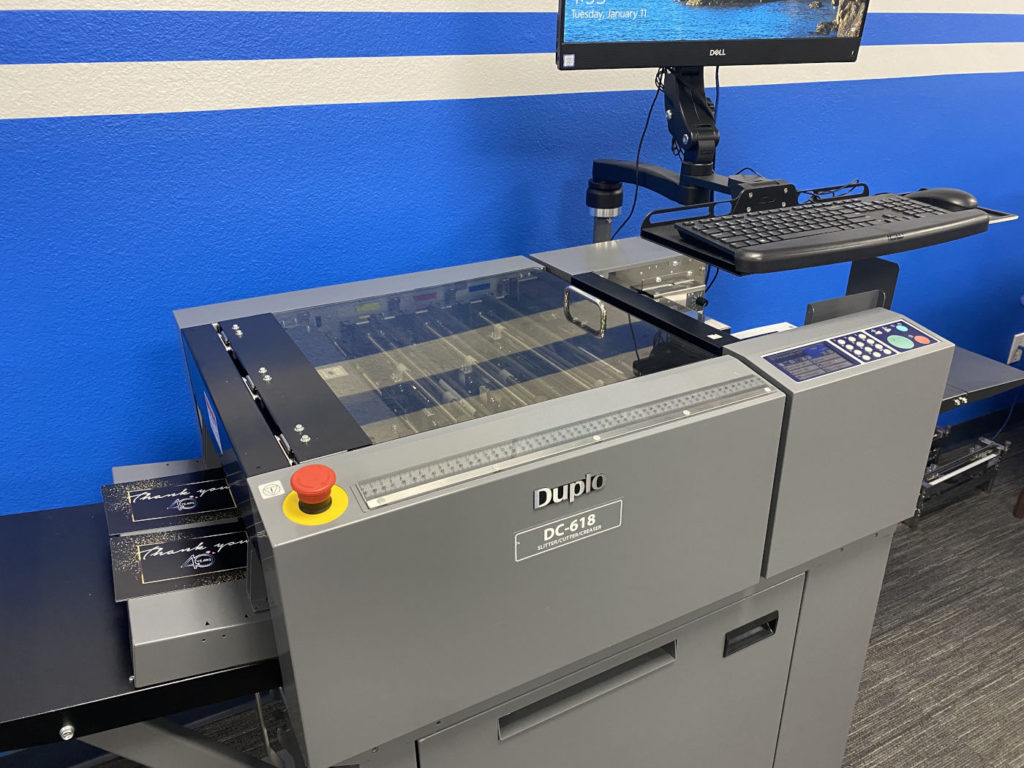Buying a new piece of production equipment can be a very exciting and possibly, stressful time. After all, new equipment or rather, new solutions are added to remedy a problem or add new products, improve productivity by streamlining the workflow and eliminate touchpoints. Who doesn’t want to eliminate production bottlenecks, waste, lost revenue and add new profit generators?
Adding new equipment, when handled properly, is an easy transition. If not planned and executed properly, the entire project can be a disaster.
So, what makes an installation successful? The short answer is well planned delivery, installation, and training tasks. Here’s the breakdown:
SOURCE THE CORRECT SOLUTION FOR YOUR NEEDS
An entire blog can be devoted to this, but in short, purchasing the right solution for your needs and your customers is key when shopping for new equipment. If your customers are asking for a specific type of finishing, for example, make sure you’re getting the equipment that has the ability to do so. If not, you’ll be wasting time and money getting the wrong equipment out and the right equipment in.
DETERMINE THE LOCATION OF THE NEW EQUIPMENT
Determining where the hardware will fit physically into the production environment is very important. Take note of the equipment dimensions and make sure it will fit into the space you have available.
Having the right finishing device in the correct location plays a pivotal role in an efficient, streamlined process. The production process starts out electronically via computers or workstations and then the job is printed. The finishing equipment should be placed between the printers and the next production stage or packing/shipping department. It’s a step that can translate into hours of saved time.
DETERMINE HOW IT WILL GET INSIDE THE BUILDING
Once the new equipment is delivered, the next step will be getting it inside the building and into the production environment. If you have a warehouse or dock available, getting it inside should be no hassle. But what if you don’t? What if you’re on the top floor with no access to an elevator? What is the minimum opening the equipment must fit through? Is a forklift and operator available? These are some of the important questions to consider. A site survey is a very good idea so there are no surprises during the installation process.
HAVE ADEQUATE POWER AVAILABLE
Although most print shops are equipped to handle the power requirements of their equipment, it’s still important to take note of the power the new equipment requires and double check your shop has the power sources at the necessary capacities.
PROVIDE VENTILATION AND COMPRESSED AIR
There’s certain equipment, such as UV coaters and perfect binders, which require ventilation and possibly compressed air. If the machine requires ventilation, is there a way to vent the unit?
TRAIN YOUR OPERATORS
When the proper solution has its place in the facility, it’s time to address the day-to-day operation and maintenance. This is where training comes in.
First and foremost before the trainer sets foot in the door is make sure to read the instructions! All equipment manufacturers publish some sort of documentation and it’s a good idea to review the operation manuals and get familiarized with the new equipment. Getting your hands on the documentation during the sales process is a great way to see how a manufacturer views its products and support.
Determine what skills the operators must possess, match them with the equipment, and set up a time with the training staff. Make sure this meets the time required for the training. This is not: “Hey c’mon in Monday morning and we’ll give you an hour.”
Training will set the foundation for the success of the new solution. The time set aside for training is just that – time allocated without interruptions. Periodic breaks should be taken to keep the mind clear but training is a learning experience and no one can be expected to learn and master concepts with constant interruptions.
When it comes to integrating a piece of automated finishing equipment, workflow is extremely important. This means a working knowledge of the Digital Front End (DFE) is required. The finishing equipment trainee or operator doesn’t need to know the DFE, however, there needs to be someone who does. A typical digital print environment usually involves more than one person, so the team has to be on board with the training. Be prepared to create impositions based on the various applications going to be produced.
And finally, ask questions! Ask questions during the sales cycle, before installation, and during training. Be sure to get the trainer’s contact information and set up a follow up appointment BEFORE the trainer leaves. Questions will arise after training and it’s a good idea to address these at the follow up.
There you have it! Your guide to a successful installation. Executing these tasks in the proper order will help result in a hassle-free delivery, installation, and training of your new equipment. It’s all about making the transition easy for you and your staff, and planning ahead will help you get there.

Alan McLean
Regional Sales Director
Duplo USA




